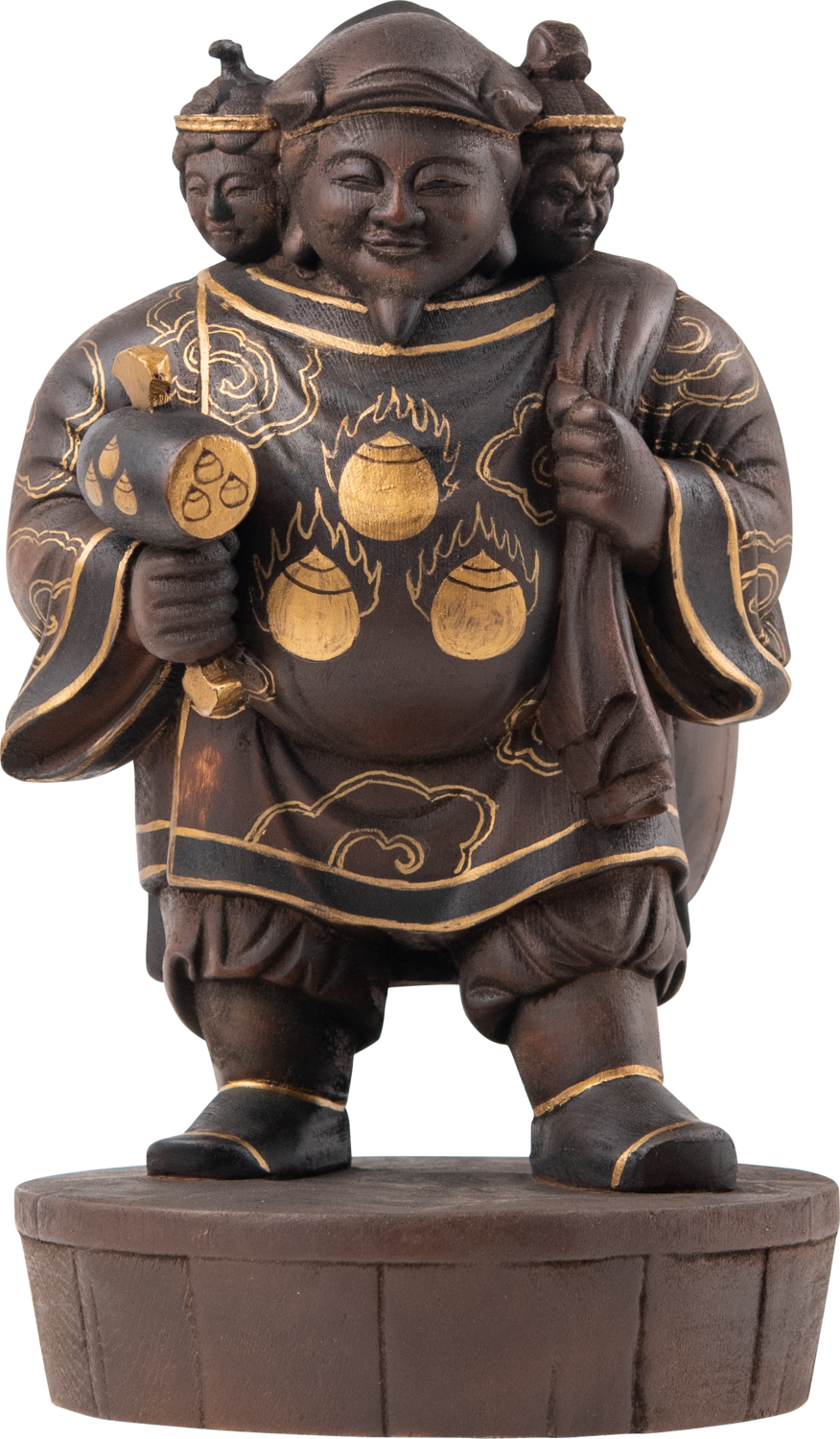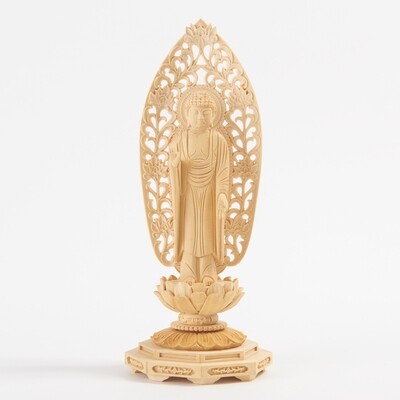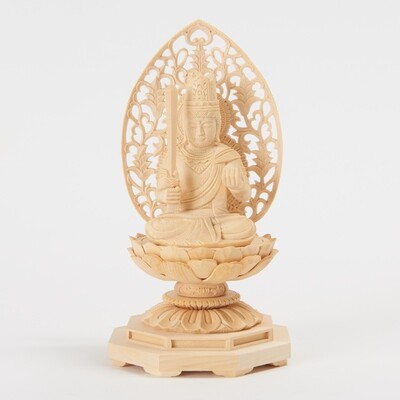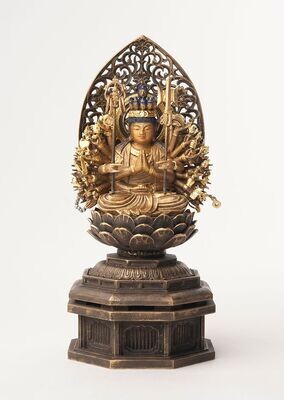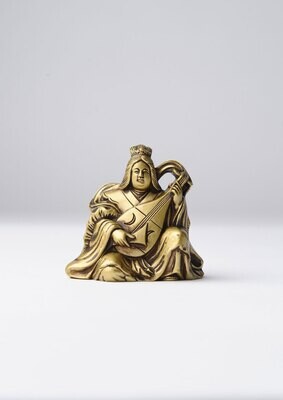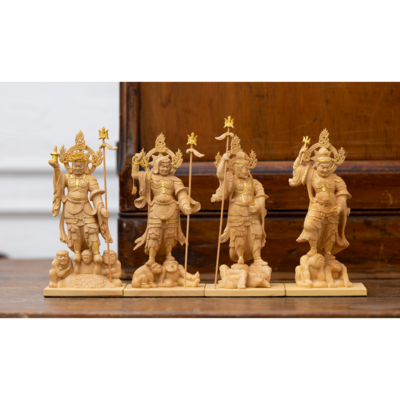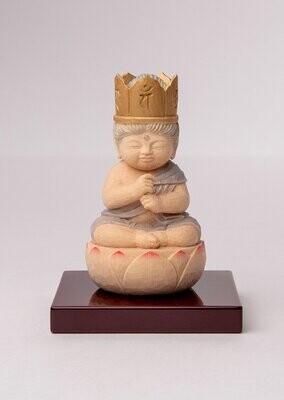Three-faced Daikokusonten (三面大黒尊天)
The Touse-zan Shitenno-ji Temple in Tsu City, Mie Prefecture, established by Prince Shotoku through an imperial prayer from Empress Suiko, houses the renowned "Sanmen Daikoku Son Ten" statue, believed to have been prayed for by Oda Nobunaga. According to the woodblock prints from the Meiji era preserved in the temple, this statue is a venerable piece said to have been created by Prince Shotoku. This artwork has undergone a 3D scan with the certification of Shitenno-ji Temple, faithfully reproducing the wooden statue based on the precise data obtained. Each statue has received a grateful eye-opening ceremony from the hosting temple, and it comes with a certificate of eye-opening ceremony and two amulets (visage amulet, goshuin) as proof. A historical and romantic masterpiece connected to historical heroes like Prince Shotoku and Oda Nobunaga, it serves as a guardian deity to strongly overcome the challenges of the COVID-19 pandemic.
The current appearance of "Sanmen Daikoku Son Ten" held by Shitenno-ji Temple has experienced color fading due to aging, with the surface coloring almost completely peeled off, revealing the exposed wood underneath. Nevertheless, the dignity that strikes the hearts of those who behold it remains unwavering. In the process of creating this artwork, there were initial proposals to reproduce the current appearance as it is and to recreate the appearance from the past when Oda Nobunaga prayed. However, after repeated discussions, it was decided to recreate the appearance from its glorious days. The reference for this was the appearance of "Sanmen Daikoku Son Ten" depicted in old amulets handed down in Shitenno-ji Temple. Based on this, a Buddhist statue colorist conducted verifications, and the result is this artwork. Through a single worship, Sanmen Daikoku Son Ten embodies the blessings of three deities - Daikokuten, Bishamonten for victory and fortune, and Benzaiten for wealth and treasures. It is considered the most powerful deity, combining these three divine aspects through a single worship.
Daikokuten, originally a combat god known as Mahakala in India, gradually became the object of worship for wealthy merchants due to its powerful ability to bring treasures. When introduced to Japan, it became associated with Daikokuten, the deity of bountiful harvests, due to the similarity in pronunciation (daikoku). Riding on a large sack and holding a mallet, Daikokuten is also revered as a deity of abundant harvests.
Bishamonten, also known as Tamon-ten, is one of the Four Heavenly Kings guarding the northern direction. With a brave figure trampling evil demons, Bishamonten is considered a deity for victory, success, and financial fortune. Notable figures like Prince Shotoku, Sakanoue no Tamuramaro, and Kusunoki Masashige deeply revered Bishamonten. While Uesugi Kenshin is famously associated with Bishamonten, Takeda Shingen also carried a golden Bishamonten statue in his helmet during battles. Many renowned warlords of the Warring States period achieved victory through their faith in Bishamonten.
Benzaiten, originally the deification of a river called Sarasvati in ancient India, became a goddess of fortune when Buddhism spread through China via the "Golden Light Sutra." Revered as one of the Seven Lucky Gods, Benzaiten is associated with music due to her transformation from a river goddess linked to the gentle sounds of flowing water. Now, symbolized by a white snake, she is regarded as a deity bestowing wealth, fortune, and treasures.
Oda Nobunaga, a great warlord symbolizing the Warring States period, was a visionary leader who innovated in various fields such as politics, economics, military strategy, culture, and the arts. The motto "Tenka Fubu" (布武), which Nobunaga used for his official seals, did not only mean to pacify the world with military force but to achieve peace throughout the land by embodying the seven virtues of martial arts. These virtues are Kinbou (restraint from violence for a peaceful world), Chihei (aspiring for a peaceful world without conflicts), Hodai (aspiring for a world where everyone can be proud), Teikou (aspiring for a world where achievements and effort are rewarded), Anmin (aspiring for a world where everyone can find peace), Washu (aspiring for a world where everyone gets along), and Hoyo (aspiring for a world where everyone is blessed with abundance). Oda Nobunaga, with his revolutionary thinking and a strong sense of tradition and faith, fiercely traversed the turbulent times of the Warring States period but fell before completing his path. His popularity remains strong to this day.
- Size: 235(H)×150(W)×140(D)mm, 765g
- Material: Hinoki
- Made in China
- Shipped globally from Japan by using DHL. DHL is the world-class shipping services provider who makes international delivery a fast, smooth, and hassle-free experience. Delivery time can be faster than when shopping at an e-commerce website in your country, and of course your package will be covered by insurance. You can check the shipping cost for your entire order before you make a purchase
